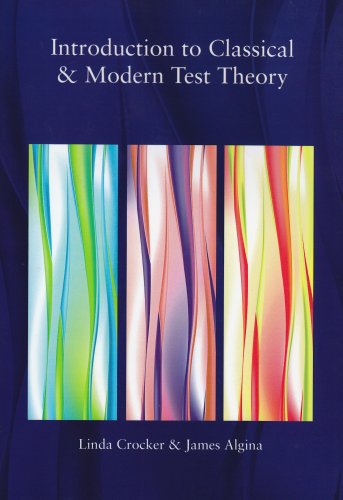Introduction to Classical and Modern Test Theory book download
Par warrington nicholas le samedi, septembre 5 2015, 22:18 - Lien permanent
Introduction to Classical and Modern Test Theory. Linda Crocker, James Algina

Introduction.to.Classical.and.Modern.Test.Theory.pdf
ISBN: 0495395919,9780495395911 | 527 pages | 14 Mb

Introduction to Classical and Modern Test Theory Linda Crocker, James Algina
Publisher: Wadsworth Pub Co
Crocker L, Algina J: Introduction to Classical and Modern Test Theory. In this context, a true score represents “the average score a person would obtain on an infinite number of parallel forms of a test, assuming that the person is not affected by taking the tests (i.e., assuming no practice or .. Lord FM: Applications of Item Response Theory to Practical Testing Problems. Introduction to Classical and Modern Test Theory by James Algina – Simply A Great Book. For five days and provided at least 3 full days of complete data. The new scales were analyzed using Classical Test Theory (CTT) and IRM; a reduced set of items was produced with IRM and correlated with accelerometer counts per minute and minutes of sedentary, light and moderate to vigorous activity per day after school. Introduction to classical and modern test theory. Crocker L, Algina R: Introduction to classical and modern test theory. New-York: Harcourt, Brace, Jovanich College Publishers; 1986. New York: Rinehart & Winston; 1986. The 1991 revision of the Wechsler Intelligence Scale for Children (WISC-III) resulted in the addition of an optional subtest - Symbol Search. Distance Learning Education Courses - Introduction to Classical and Modern Test Theory. New York: Holt, Rinehart and Winston. The concept of parallel tests is also commonly invoked as part of classical measurement theory.
Storage Networks: The Complete Reference pdf download